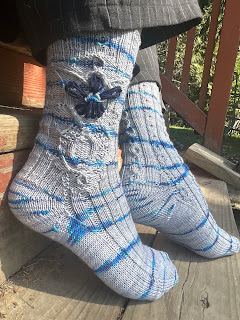the Frameless Bra Fitting Band
Bra Styles
Have you noticed there are two styles of wired bras. Framed or frameless. All wired bras fall into one of these two categories.
The typical bra has a front frame that is made of an outer frame on either side and an inner gore. These three pieces, or sometimes cut as just one piece, or even in more pieces, are joined under the cups and create the front of the bra. The cups have fabric around the entire wireline edge to be sewn into, hence they have been framed like a picture.
The other style of wired bra is the frameless bra. This may sound like the cups have gotten away scot-free and are traipsing through the countryside, and perhaps they are, but the reality is they have a part of the front frame removed. The outer frame is not connected to the center front gore under the wire. The bottom edge of the frame has been shortened, which may allow for more movement, or to make room for a high abdomen.
The way the wire line is connected to the cup and frame is different. In the typical bra, as most are fully framed in, the band is sewn right sides together to the cup and then the seam allowance is turned out towards the band. The underwire channeling (a tube the underwire is placed into) is sewn to cover the seam - literally sewn to the stitching line against the cup, then the outer edge of the channeling is top stitched down to hide it. Simple, ingenious. But what if there is no band?
For the frameless, or partial band, bra, an extra seam allowance is added around the cup the width of the channeling. The seam to the center gore, or bridge, and the outer frame are sewn to the cup right sides together, then the channeling is sewn to the seam. This time, the channeling and seam gets turned under into the edge of the cup. The inner edge of the channeling is sewn down to the cups. Simple, ingenious.
Fitting bands
Fitting bands are a tool for adjusting the bra pattern to fit the individual. They are very useful to be able to not use as much fabric and elastic as making one full bra after another. It can be difficult to use a fitting band for a regular framed bra. Imagine fitting a band, then adding a cup. The weight placed on the band may now cause issues. The cup may be perfect, or may be way off, but often the tension the top band needs has been left off the equation when fitting only the band. Bear this in mind as any bra is fit. It can be easier to just work around a full bra. The fitting band, then, gives us a band that is fit to wires that fit the body, with the ability to have removable cups for the bulk of fitting. There may still be fitting to do once you can see how the fabric behaves with all structures fully sewn down.
Because of this frustration, the center front fitting is my focus before cups are added. It can be difficult to see how the wires are sitting against the lower and outer edge of the bra. By making the fitting band, it is easier to see if the center front needs to be narrowed or widened. Personally, the only indicator I see of my fit issue is that the wires want to sit below my breasts. If I take one wire and place it where it “feels right,” then I may be able to determine if the bridge needs to be spread to allow the other wire to rise up to the other breast. Once this center front space is corrected, the back band is often in a better place. I can add cups and see if other adjustments are needed for the band.
Kat of Kat Makes blog demonstrated a fitting band for the partial band bra during the 2024 Bra Bee. Before, it was assumed that the lack of structure would make this near impossible, as channeling often has mechanical give, which can cause things to shift on the wireline. Kat cleverly came up with the simple strip of fabric to sew the channeling to, which helps stabilize the edge, and gives a seam allowance to sew the cups to.
Tight channeling?
As an aside, I did make sure to note, though, that the opposite side of the channeling is sewn down in each of these styles. Think of an arch, like a rainbow. To work to the outer edge is longer, the inner edge is shorter. Personally, I find that this means the channeling may end with a snugger feel on the framed bras as the shorter curve is sewn down first, and the channeling may need to stretch slightly to be sewn down. The frameless bra has the longer edge sewn down first, and thereby the shorter arc may actually be slightly gathered -usually not enough to visually notice, but enough that I find the wire fits better in this style. So, if you have any issue with the channeling being snug in the framed style bra, maybe measure first and make sure you are getting the full length needed in that wireline.




